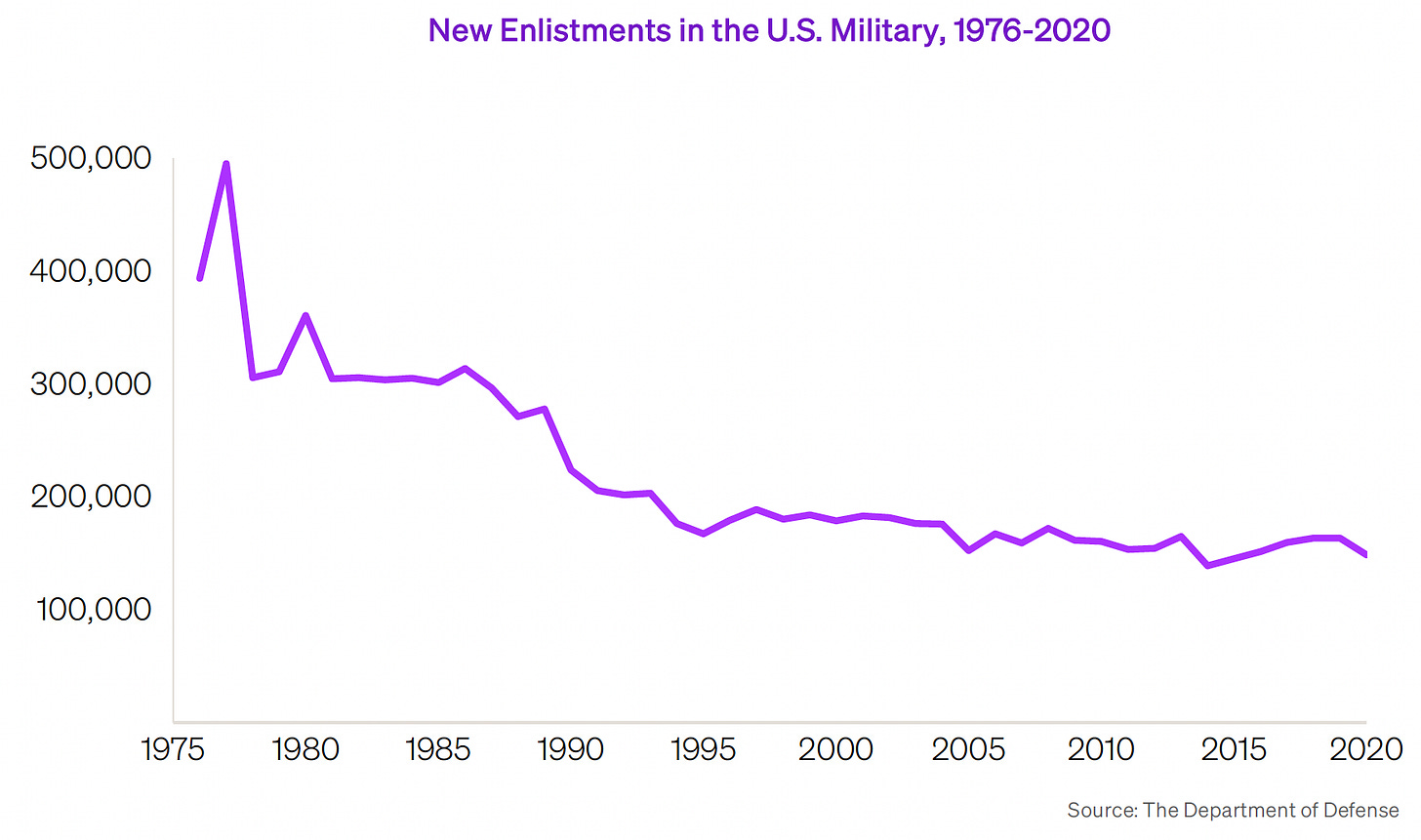Deep Dive: Defense 2.0 - Protecting America
How much does the U.S. spend on defense? How does the defense industry work? What will the future of defense look like tomorrow?
The world is currently experiencing a significant geopolitical shift, marked by active conflicts in Ukraine and Gaza, rising tensions in the Red Sea, and mounting concerns over a potential Chinese invasion of Taiwan.
Amid this geopolitical backdrop, we are presented with seemingly conflicting data points. The U.S. has been the world's preeminent military power for the past 70 years, yet the conflict in Ukraine has exposed shortages in critical U.S. weaponry such as Javelin missiles, and new enlistments in the U.S. military are near an all-time low over a 40-year period.
How do we make sense of this?
To evaluate the U.S.'s position in the current world order, we study the evolution of warfare from the Industrial Revolution to today. Rather than a historical analysis, we focus on a topic less discussed but equally important: how the arc of technological progress has led to the emergence of new military capabilities.
This through-line in the evolution of warfare leads us to the current paradigm: the development of weapons with human-like capabilities that can be manufactured at scale, exemplified first by the emergence of drone warfare. This paradigm is the basis for our exploration into the future of warfare, which discusses how autonomous weapons and other cutting-edge technologies may redefine combat tactics and grand strategy once again.
We also examine the U.S. defense industry: first how the military-industrial complex is designed to work, and then where the military-industrial complex deviates from its intended design. We look at the “Big Five” defense contractors - Lockheed Martin, Boeing, Northrop Grumman, Raytheon Technologies, and General Dynamics - as well as technology startups like Anduril and Saildrone.
To tie everything together, we go through two case studies: the ongoing Russia-Ukraine War and a potential China-Taiwan conflict.
You can read our full deep dive in the attached audio file and PDF, both of which are available to our paid subscribers at the end of this post.
In future months, I will publish deep dives into other crucial sectors of the economy. These will cover five main themes:
Deep Tech
Energy Transition
Healthcare & Life Sciences
Economic Analysis
Socio-Political Trends
If enough people are interested and subscribe, we can invest in hiring more researchers. We will also look to you, our subscribers, to influence our research topics and share insights with others.
I hope you enjoy reading this and let us know how we can improve.




